Every year, hundreds of thousands of people around the world take pills they think are real medicine - but aren’t. These aren’t just expired or poorly stored drugs. These are counterfeit medications, made in secret labs, packed in fake boxes, and sold online or through shady pharmacies. Some look identical to the real thing. Some even taste the same. But they can kill you.
The World Health Organization estimates that 500,000 deaths annually from diseases like malaria and pneumonia are linked to fake or substandard drugs. In the U.S., the FDA has documented cases where counterfeit Viagra contained amphetamine. Fake opioid pills have been found with enough fentanyl to kill five people. And it’s not just overseas - counterfeit drugs are flooding online marketplaces, social media ads, and even some local pharmacies that don’t ask for prescriptions.
Packaging That Doesn’t Add Up
The first place to look is the box. Legitimate pharmaceutical companies spend millions on packaging that’s hard to copy. Counterfeiters cut corners. Look for:
- Spelling mistakes - even one wrong letter, like "Vigra" instead of "Viagra," is a red flag
- Blurry or pixelated printing, especially under magnification
- Mismatched colors - the blue on your pill bottle should match exactly what you’ve seen before
- Missing or incorrect batch numbers, expiration dates, or lot codes
- A seal that looks like it was resealed - check for uneven glue or air bubbles
The FDA found that 78% of counterfeit drugs have packaging defects. One case involved a fake diabetes pill where the box said "Take with food" in English, but the inside label had the same instruction in Spanish - with a typo.
What the Pill Looks Like - And Doesn’t Look Like
Once you open the bottle, check the pills themselves. Legitimate drugs are made with precision. They’re uniform in size, weight, and texture.
- Weight: Real tablets vary by less than 5% in weight. If yours feel lighter or heavier than usual, that’s a warning
- Shape: Look for cracks, bumps, or uneven edges. Fake pills often look molded, not pressed
- Coating: If the coating is crumbly, bubbly, or peeling off easily, it’s not real
- Color: Even slight differences in shade matter. A fake metformin pill might look too pale or too dark compared to your last refill
- Imprint: Every FDA-approved pill has a unique imprint - letters or numbers pressed into it. If yours has no imprint, or the imprint looks smudged, don’t take it
Pfizer’s 2023 guide says even microscopic differences in embossing can reveal fakes. Legitimate manufacturers use custom tooling that’s nearly impossible to copy exactly. Counterfeiters can get the shape right - but not the tiny details.
Price That’s Too Good to Be True
If a drug is being sold for half the price of your local pharmacy, it’s almost certainly fake. Legitimate pharmaceuticals rarely drop more than 20% off retail. Counterfeiters offer 50% to 80% discounts to lure people in.
Consumer Reports found that websites offering prices 60% below retail had an 87% counterfeit rate. Those within 20% of retail? Only 0.3% were fake. That’s not a coincidence - it’s a pattern.
Why do fake drugs cost so little? Because they’re made with cheap, dangerous ingredients. One batch of fake Ozempic was found to contain only sugar and chalk. Another, labeled as a weight-loss pill, had no active ingredient at all. Others contained toxic chemicals like rat poison or industrial dyes.
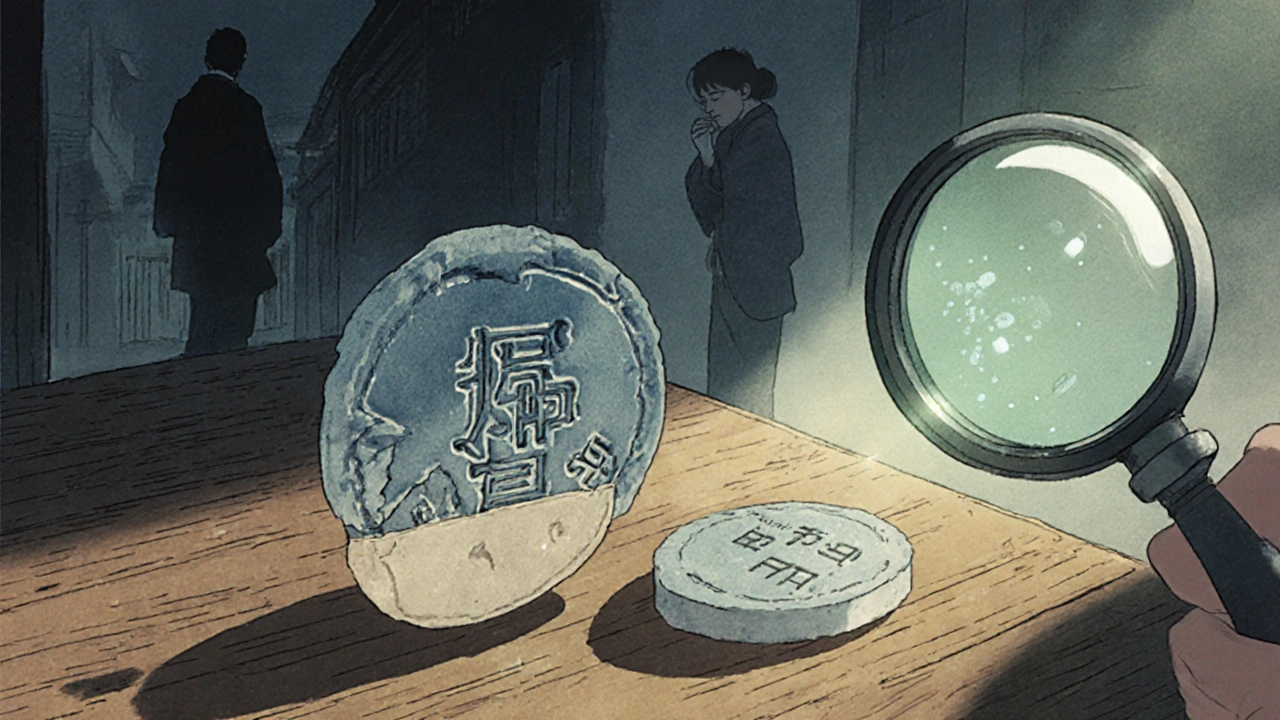
Online Pharmacies You Can’t Trust
Most counterfeit drugs come from websites pretending to be legitimate pharmacies. The FDA says 92% of counterfeit prescriptions come from online sellers that don’t require a prescription.
Here’s how to check if a site is real:
- Look for the .pharmacy domain - only verified sites can use it. As of January 2025, only 6,214 sites worldwide have this seal
- Check if the site lists a physical address and phone number you can call
- Search the site name + "scam" or "complaint" - if dozens of people report being scammed, walk away
- Never buy from social media ads, Instagram sellers, or Telegram groups
Interpol found over 35,000 illegal online pharmacies in 2024. Only a tiny fraction are safe. If it looks too easy - no doctor visit, no prescription, fast shipping - it’s a trap.
What Happens When You Take a Fake Pill
Some fake pills do nothing. Others make you sick. A few kill you.
Real metformin helps control blood sugar. Fake metformin found in 2023 contained glyburide - a stronger diabetes drug that can cause dangerous drops in blood sugar. Patients reported sweating, shaking, fainting, and seizures.
Fake opioid pills? 100% of those seized in DEA’s 2024 Operation Press Your Luck contained fentanyl. Some had up to 2.3mg per pill - enough to kill someone who’s never used opioids before. That’s 46 times the dose of a standard 5mg oxycodone pill.
Counterfeit malaria pills often contain no active ingredient at all. Patients get sicker. Some die. In Sub-Saharan Africa, this isn’t a rumor - it’s a public health crisis.
How to Verify Your Medication
If you’re unsure, don’t guess. Use these six steps:
- Check the seal - tamper-evident packaging should show clear damage if opened
- Verify the NDC code - enter it into the FDA’s National Drug Code Directory (updated weekly)
- Call the manufacturer - Pfizer, Novartis, and others let you call to check if a lot number is real. 37% of counterfeit lot numbers don’t exist in their system
- Compare your pill - visit the manufacturer’s website. Most top drugs have reference images showing exact size, color, and imprint
- Do a solubility test - drop a pill in a glass of water. Legitimate tablets take at least 30 minutes to dissolve. Fakes often dissolve in under 2 minutes
- Report it - if something’s wrong, file a report with FDA MedWatch within 24 hours
Pharmacists trained in counterfeit detection have reduced fake drug dispensing by 63% in participating pharmacies. You don’t need to be an expert - just observant.

What’s New in Counterfeit Tech
Counterfeiters are getting smarter. AI now generates fake packaging that fools 68% of people at first glance. Some pills match the real thing down to 0.1mm in size and perfect Pantone color matching.
But even the best fakes have flaws. Legitimate holograms contain microtext only visible at 50x magnification. Fake ones look shiny but lack the hidden letters. The FDA’s new PharmMark system, launching in 2026, will use invisible nanoparticles that glow under UV light - something counterfeiters can’t replicate without access to proprietary materials.
The biggest emerging threat? Counterfeit biologics - drugs like Humira or Ozempic that must be kept cold. Fake versions often lack proper refrigeration logs. Take one that’s been sitting in a hot warehouse for weeks? It’s not just ineffective - it’s dangerous.
What to Do If You Suspect a Fake
If you think your medicine is fake:
- Stop taking it immediately
- Save the bottle, box, and any packaging
- Call your pharmacist or doctor - they can help verify it
- Report it to the FDA through MedWatch - your report helps protect others
Don’t return it to the seller. Don’t flush it. Don’t throw it in the trash. Keep it for authorities. Many fake drug cases are solved because someone kept the evidence.
And if you bought it online? Don’t just delete the website. Take screenshots. Save the chat logs. Report the site to the National Association of Boards of Pharmacy. They track these sites and shut them down.
How can I tell if my prescription is fake just by looking at it?
Check the pill’s imprint, color, size, and texture. Compare it to images on the manufacturer’s website. Look for cracks, uneven edges, or smudged letters. If the bottle has spelling errors, blurry printing, or a seal that looks resealed, it’s likely fake. Even small differences - like a slightly different shade of blue - can mean it’s counterfeit.
Are all online pharmacies dangerous?
No - but most are. Only websites with the .pharmacy domain are verified by the National Association of Boards of Pharmacy. As of 2025, there are just over 6,200 of these trusted sites worldwide. Any other online pharmacy - especially those that don’t require a prescription - should be assumed unsafe. If it’s too cheap, too fast, or too easy, it’s a red flag.
Can counterfeit drugs be harmless?
Sometimes - but rarely. Some fake pills contain only sugar or starch and won’t hurt you. But many contain toxic chemicals, wrong dosages, or dangerous substances like fentanyl or amphetamine. Even if you feel fine, taking a counterfeit drug means you’re not getting the treatment you need. For chronic conditions like diabetes or high blood pressure, that can be deadly over time.
Why are so many counterfeit drugs targeting weight loss and erectile dysfunction pills?
Because they’re expensive and people are desperate. Drugs like Ozempic and Viagra cost over $900 a month. Counterfeiters make huge profits selling fake versions for $20. People are more likely to skip the doctor and buy online. That’s exactly what counterfeiters count on - fear, shame, and high prices.
What should I do if I’ve already taken a fake pill?
Stop taking the medication immediately. Contact your doctor or pharmacist. If you experience unusual symptoms - like dizziness, chest pain, rapid heartbeat, or severe nausea - seek medical help right away. Report the incident to the FDA through MedWatch. Even if you feel fine, your case helps track the source and prevent others from being harmed.
Is it safe to buy medication from international pharmacies?
It’s risky. Countries with weak drug regulations may sell drugs that are expired, improperly stored, or fake. Even if the pharmacy claims to be licensed, there’s no guarantee the drugs came from a legitimate source. The FDA doesn’t regulate foreign pharmacies. Only .pharmacy sites verified by U.S. boards are considered safe.
Final Thoughts
You don’t need to be a pharmacist to spot a fake drug. You just need to pay attention. Your life depends on the pills you take. If something feels off - the price, the packaging, the taste, the way you feel after taking it - trust your gut. Ask questions. Verify. Report.
Counterfeiters are counting on you to be careless. Don’t let them win.




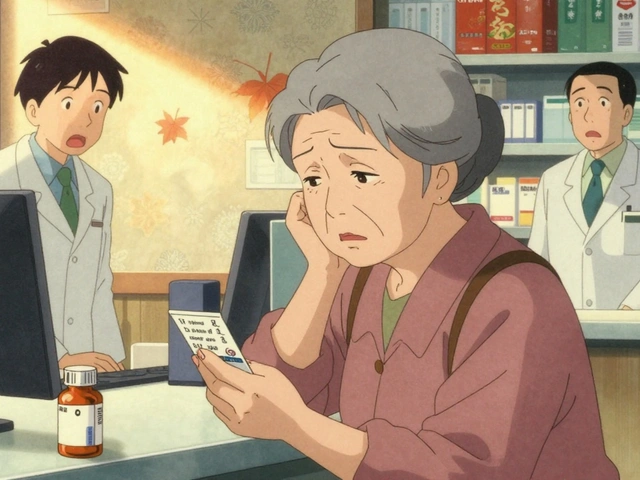
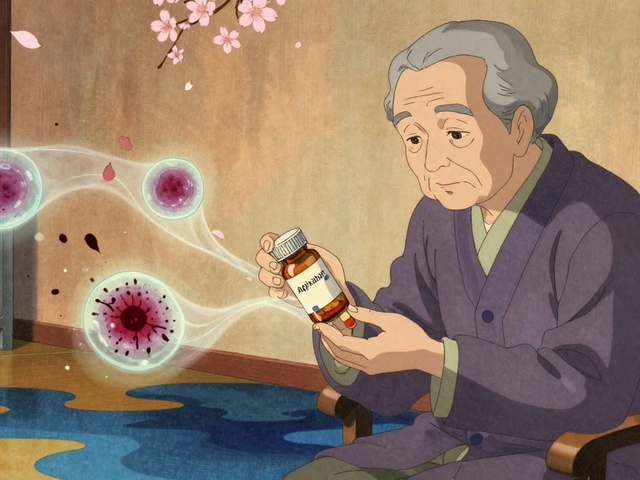
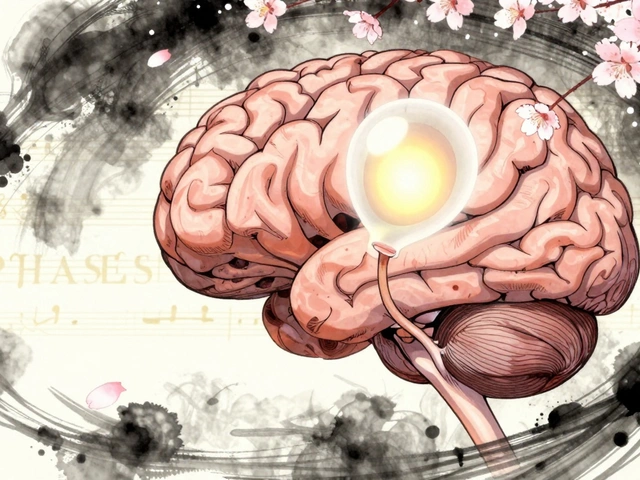

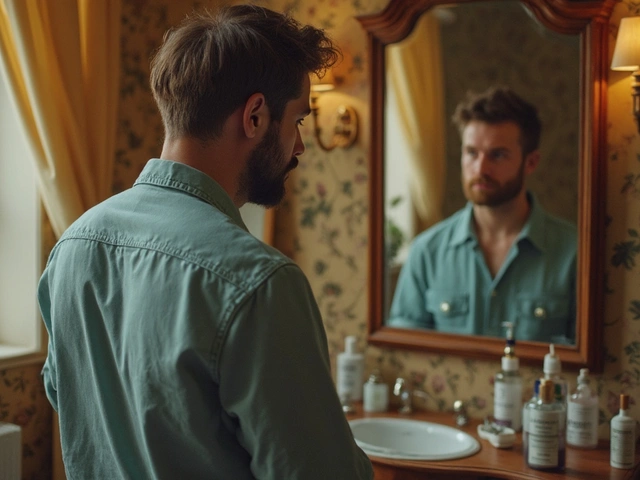
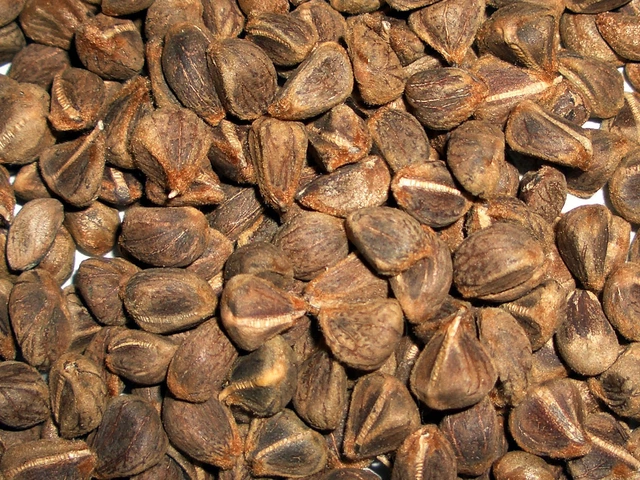
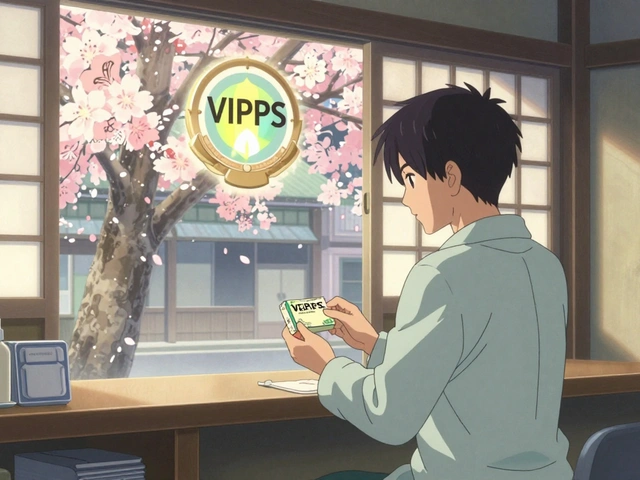

Swati Jain
22 Nov, 2025
Okay, so let me get this straight-we’re letting rogue labs pump out fentanyl-laced Viagra while Big Pharma hikes prices 400%? Classic capitalism. The FDA’s got a 6,200-site whitelist? That’s less than the number of TikTok influencers selling ‘detox teas.’ If your metformin tastes like chalk and costs $20, congrats-you just funded a Chinese underground lab’s Tesla purchase. And don’t even get me started on the ‘.pharmacy’ domain. It’s like a gold star for scammers who passed a 3-hour online course in HTML. We need blockchain verification, not band-aids.
Florian Moser
22 Nov, 2025
This is one of the most important public health pieces I’ve read this year. The level of detail on packaging anomalies, imprint verification, and solubility testing is invaluable. I’ve shared this with my elderly parents, who rely on multiple prescriptions, and encouraged them to call their pharmacist before taking any new bottle. Even small inconsistencies-like a slightly different shade of blue on a pill-can be life-saving indicators. Thank you for the clarity and actionable steps.
jim cerqua
23 Nov, 2025
LET ME TELL YOU SOMETHING. I WAS ONCE GIVEN A FAKED OZEMPIC PILL. I THOUGHT I WAS LOSING MY MIND. SWEATING. HEART RACING. SHAKING LIKE A LEAF IN A HURRICANE. I THOUGHT I WAS HAVING A HEART ATTACK. TURNED OUT? IT WAS JUST SUGAR AND DYE. I DIDN’T KNOW. I TOOK IT BECAUSE I WAS DESPERATE. AND NOW? I’M AFRAID TO TAKE ANY MEDICINE. NOT BECAUSE I’M WEAK. BECAUSE THE SYSTEM IS BROKEN. THEY’RE KILLING US WITH PRESCRIPTIONS. AND NOBODY’S IN JAIL. NOT ONE PERSON. NOT ONE.
Donald Frantz
23 Nov, 2025
The solubility test is misleading. Many legitimate extended-release formulations dissolve slowly, but immediate-release tablets can dissolve in under 10 minutes. The FDA’s own guidelines state that dissolution rates vary by drug class, formulation, and excipients. Relying on this alone could lead to false positives and unnecessary panic. The imprint and NDC code verification are far more reliable. Also, the claim that 78% of counterfeit drugs have packaging defects-source? That number needs context. Is it from FDA seizure data? WHO reports? Or anecdotal cases?
Sammy Williams
23 Nov, 2025
Bro, I bought some fake Adderall off Instagram last year. Looked legit. Tasted fine. Took it. Felt like a robot for 3 hours. Then I Googled the imprint and found it was a known fake. Saved my life, honestly. Now I only get meds from CVS or Walgreens. Even if it’s $100 more, it’s worth it. Don’t be that guy who buys from a Telegram bot. Just… don’t.
Julia Strothers
24 Nov, 2025
Who really controls the FDA? Who approved these ‘.pharmacy’ domains? Why are Chinese and Indian manufacturers allowed to export drugs to the U.S. with zero oversight? This isn’t about counterfeit pills-it’s about globalist elites selling out American lives for profit. The real fake medicine? The narrative that ‘buying from a verified site’ is safe. They’re all connected. The same corporations that make the real drugs own the ‘counterfeit’ labs. It’s a racket. And they’re using your fear to sell you more expensive pills. Wake up.
Erika Sta. Maria
26 Nov, 2025
Wait… so you’re telling me that if my pill is the right color but the imprint is smudged, it’s fake? But what if it’s just a manufacturing defect? Or what if I’m just paranoid because I read too many conspiracy blogs? I mean, isn’t reality just a simulation? And if we’re all just energy vibrations, does it matter if the pill has chalk in it? Maybe the fake pill is the real one… and the real one is the illusion? 🤔
Nikhil Purohit
26 Nov, 2025
Great breakdown. I’d add one thing: always check the bottle’s barcode against the manufacturer’s official site. Many counterfeiters replicate packaging but forget the barcode doesn’t scan. Also, if the pill is in a blister pack, check the foil-real ones have a consistent texture and slight resistance when pressing. Fake blister packs are often too soft or too brittle. And yes, the .pharmacy domain is legit. But only 6,200 sites? That’s less than 0.1% of all online pharmacies. Use the NABP’s website to verify. It’s free.
Debanjan Banerjee
28 Nov, 2025
Let’s not sugarcoat this: the U.S. pharmaceutical supply chain is a disaster. We outsource 80% of our active ingredients to countries with zero GMP enforcement. The FDA inspects less than 2% of foreign facilities annually. This isn’t about ‘fake pills’-it’s about systemic negligence. If you want real change, demand that Congress mandate full traceability from raw material to shelf. Until then, every pill you take is a gamble. And no, ‘.pharmacy’ domains won’t fix this. They’re a PR stunt.
Steve Harris
29 Nov, 2025
Thank you for sharing this. I work in a community pharmacy and we’ve had three cases this year where patients brought in suspicious pills. One was a fake insulin bottle with a misspelled label. We called the manufacturer, confirmed it was counterfeit, and contacted the FDA. It’s scary how many people don’t know how to check. I’ve started handing out a one-page checklist at the counter. Small things matter. We’re all in this together.
Michael Marrale
30 Nov, 2025
Wait… so you’re saying if I buy a $15 Viagra from a guy on Snapchat who says ‘it’s the real deal bro’ and it works, it’s still fake? But if it gives me an erection, who cares? Isn’t that what matters? Also, I think the government is secretly selling fake meds to control population growth. I saw a documentary. It had a guy in a lab coat. I’m not crazy. I’ve seen the footage.
David vaughan
1 Dec, 2025
So… I just took my metformin. Checked the imprint. Matched it to the manufacturer’s site. Perfect. But then I dropped it. It cracked. And the inside… looked… different. Like, not the same color. I’m not sure if it’s fake or just… damaged? Should I be worried? I’m not trying to panic, but… I don’t know what to do. I’ve saved the pill. I’ll call my pharmacist tomorrow. Thanks for the checklist. It’s helping.
David Cusack
2 Dec, 2025
One must question the epistemological foundations of pharmaceutical authenticity. If a counterfeit pill is indistinguishable from the genuine article-down to the micro-text on the hologram-then by what criterion do we assign ‘authenticity’? Is it not merely a social construct, a consensual hallucination perpetuated by regulatory bodies and corporate branding? The pill’s efficacy, not its provenance, should be the sole metric. Or perhaps, we are all taking counterfeit reality.
Elaina Cronin
3 Dec, 2025
Thank you for this meticulously researched and critically important article. The inclusion of verifiable data points-such as the 87% counterfeit rate for websites offering 60% discounts-is both compelling and alarming. I have forwarded this to our hospital’s pharmacy board and requested that we implement mandatory patient education sessions on counterfeit detection. Every patient deserves to know how to safeguard their health. This is not merely a consumer issue-it is a matter of medical ethics.
Willie Doherty
5 Dec, 2025
While the article presents useful indicators, it lacks critical analysis of the geopolitical dimensions of pharmaceutical supply chains. The concentration of API production in India and China, coupled with weak regulatory enforcement, is the root cause. The focus on individual vigilance-checking seals, imprints, solubility-diverts attention from institutional failure. Until international pharmaceutical regulation is harmonized and enforced, these measures are merely palliative. The problem is systemic, not superficial.